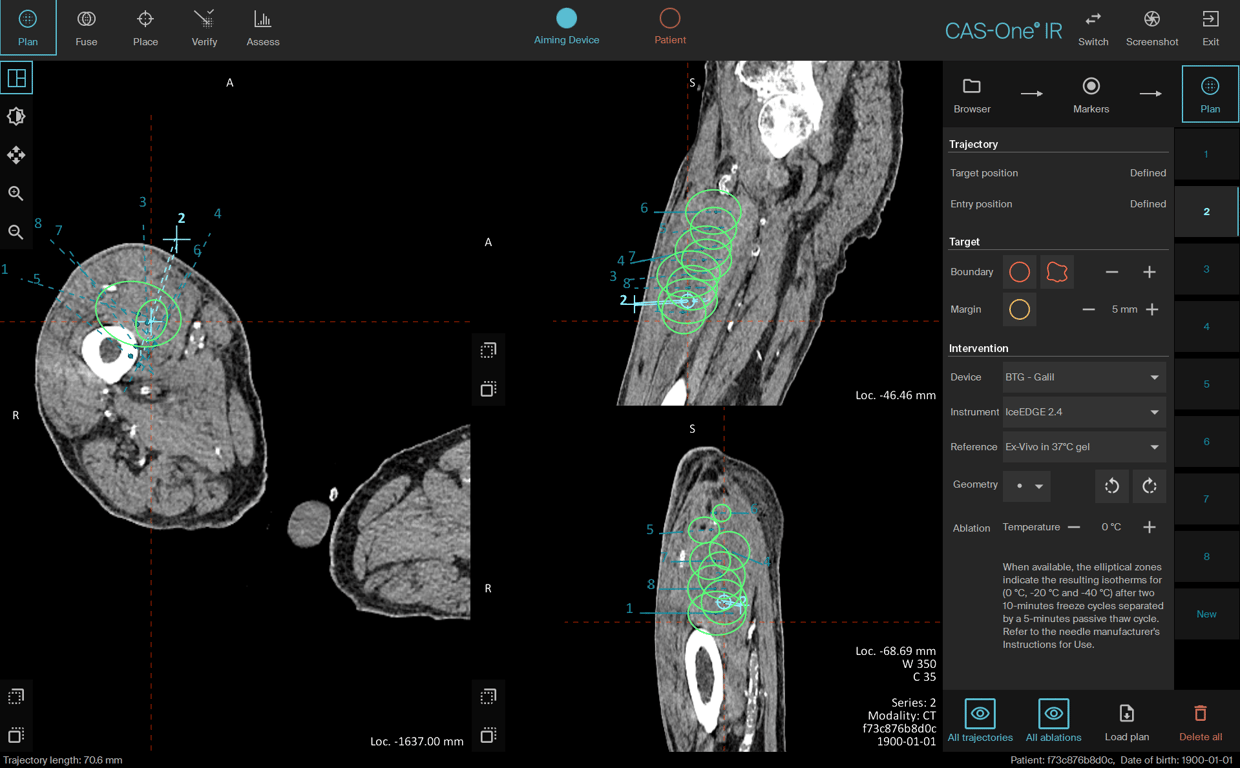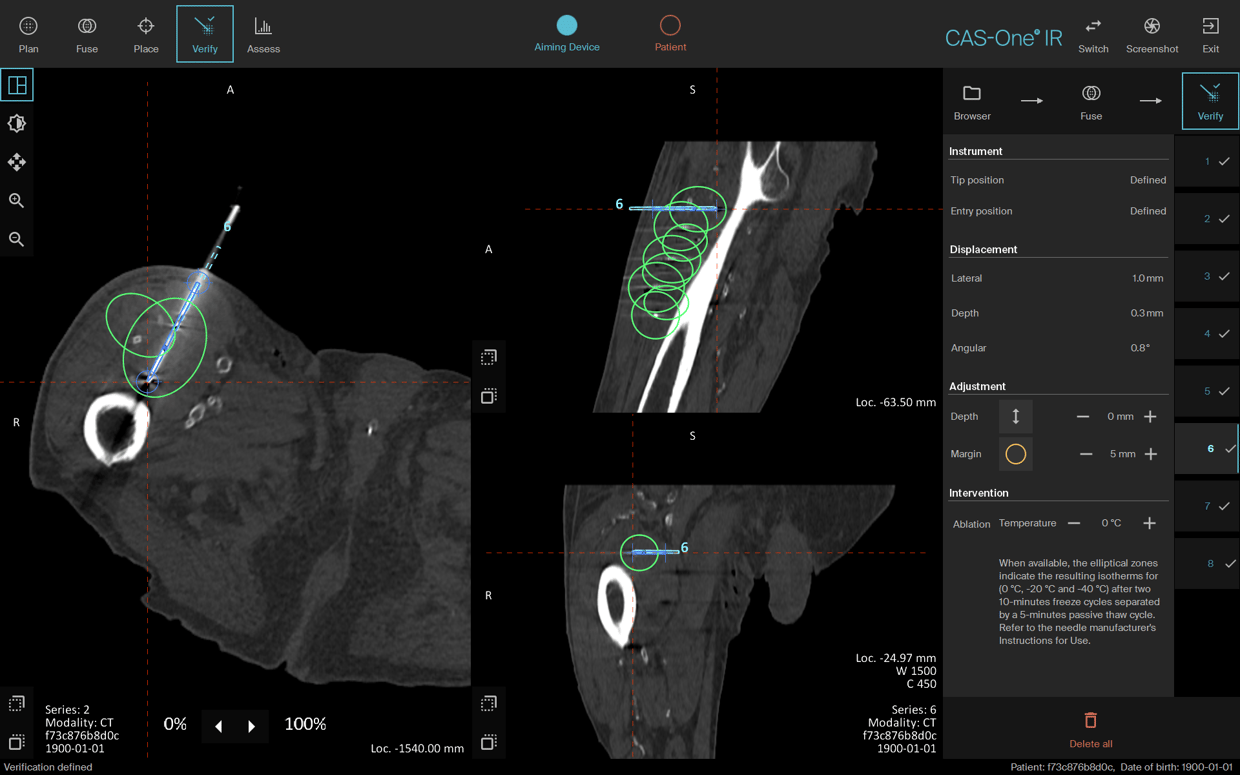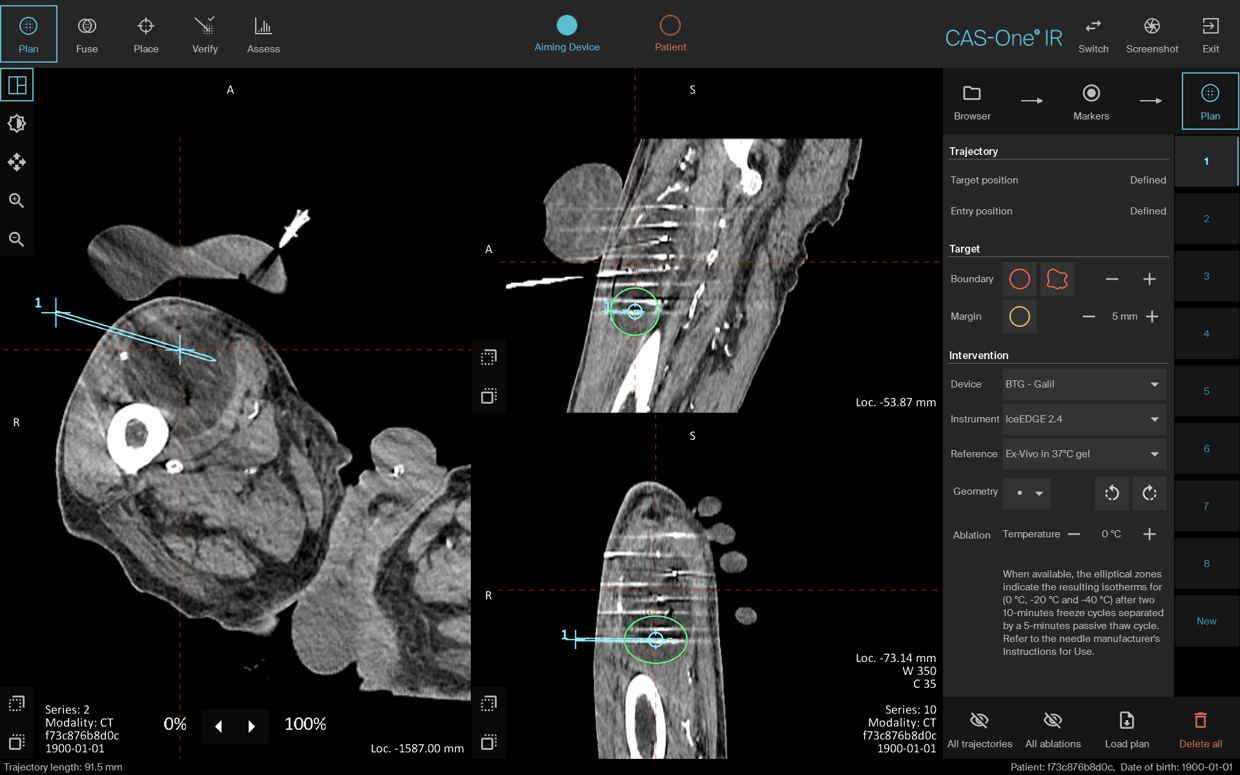Monday, 17 January 2022
Cryoablation of a polylobulated dedifferentiated liposarcoma in right femur
Cryoablation of a polylobulated dedifferentiated liposarcoma in right femur
2:14
Cryoablation of a polylobulated dedifferentiated liporsarcoma of 12 x 7 cm of the quadriceps muscle. Treatment using eight ablation needles required great precision due to proximity of the tumour to the femoral nerve. Tumour debulking intends to reduce symptoms by size reduction and softening of the tissue to mobilize the patient and improve quality of life.

Planning of eight cryo probes

Verification of probe position

Imaging of freezing cycle also showing a sterile glove filled with warm water to protect the skin of the patient
Name: Dr. Robyn M. Benz
Institution: Inselspital, Bern (Switzerland)
Patient age and sex: 94 years, male
Initial condition:
- Initial diagnosis 2019 (N0, cM0)
- Radiation treatment in 2019 with initial reduction of size of the tumour
- Tumour regrowth in autumn 2021 with recurring symptoms of pain and skin tension over the tumour, inhibiting walking and reducing quality of life of a patient in an otherwise good physical condition
- Repeated radiation was not indicated
- Clinical exam showed increase of diameter of right thigh and soft tissue induration and pain upon pressure in the area of the tumour. Tension of skin over the tumour was also clearly visible
- Indication for percutaneous tumour treatment as the patient refused surgery and systemic therapy
Treatment:
- Accurate placement of all eight needles at first go with an average lateral error of 1,7 mm
- Probe placement was completed within 70 min including two control scans
Conclusion:
- Planning, navigation and verification of eight probes resulted in a complex clinical scenario
- Preplanning of the intervention started one week prior to treatment
- Access to the trajectories by avoiding previously placed probes is narrow but possible. Diligent planning and execution required
- Overall intervention time was four hours. The patient tolerated the intervention well
- Treatment can be considered a technical success, as most of the tumour volume was covered with the cryo ablation
- Follow-up is yet to be conducted


